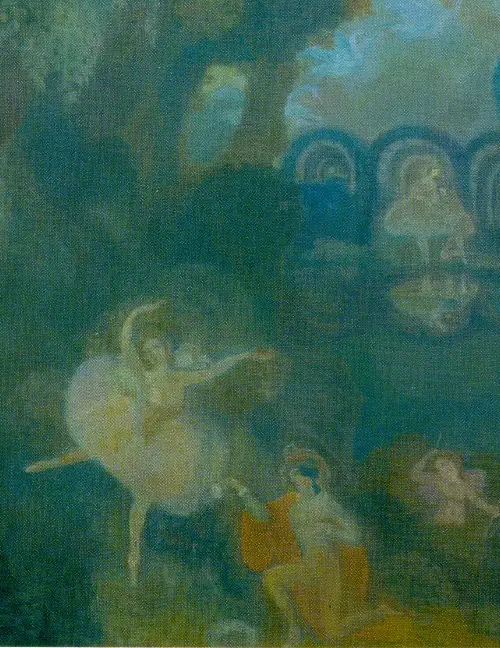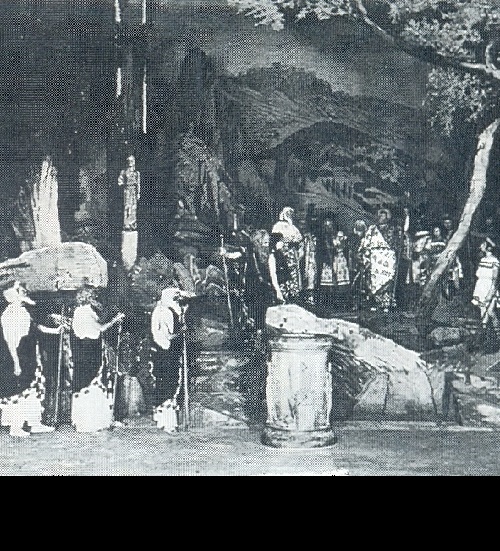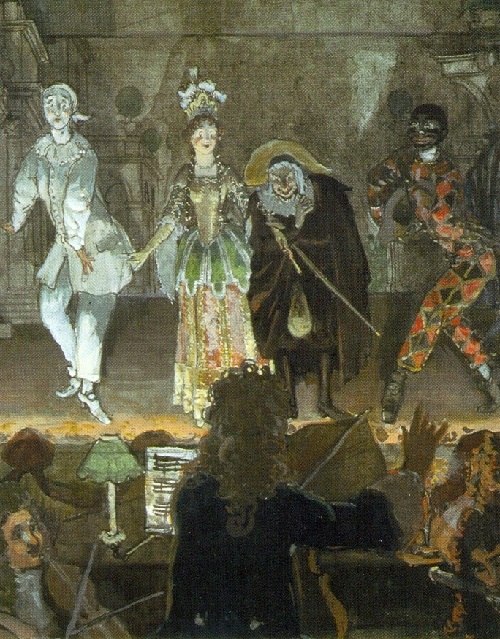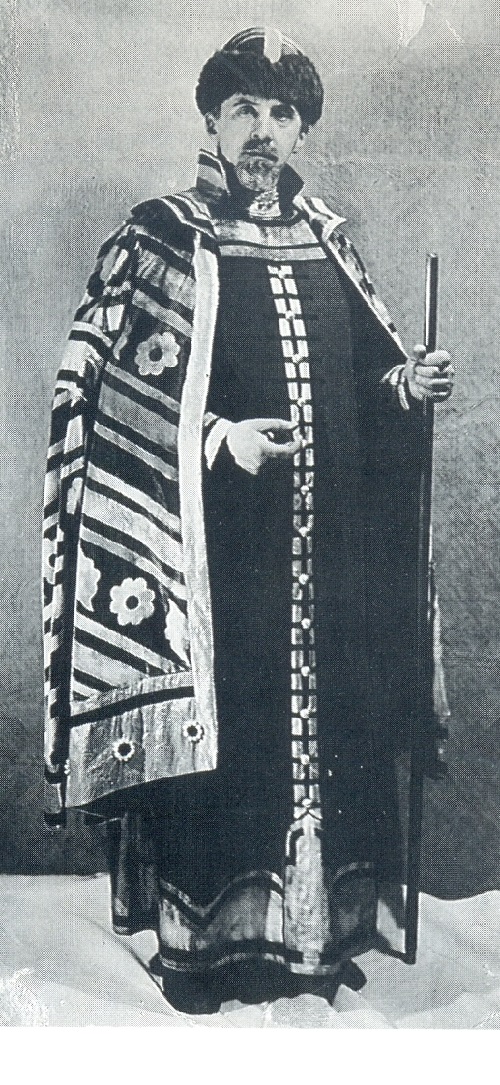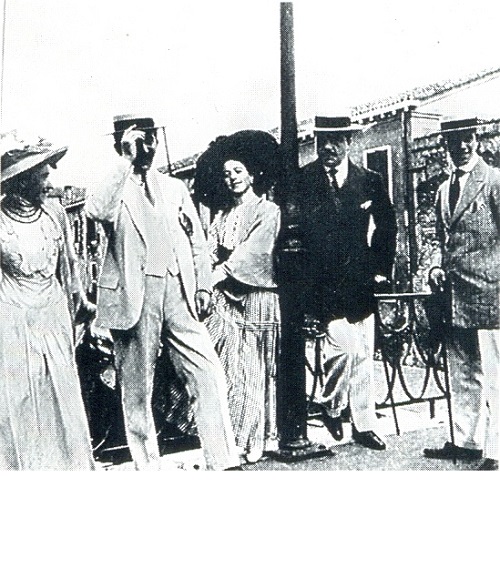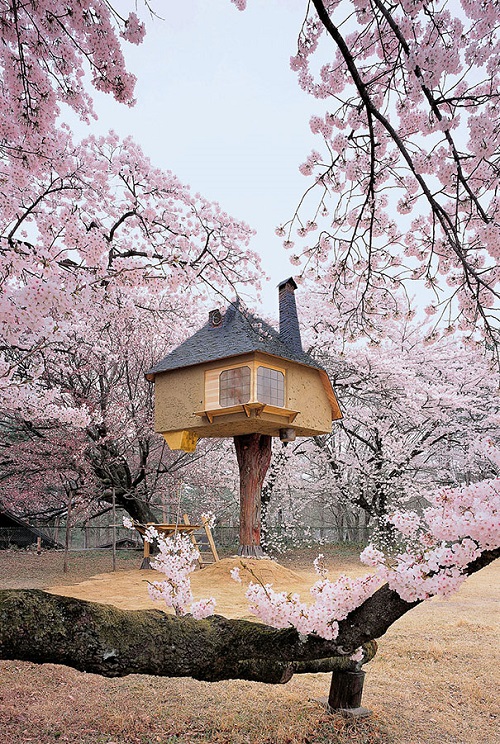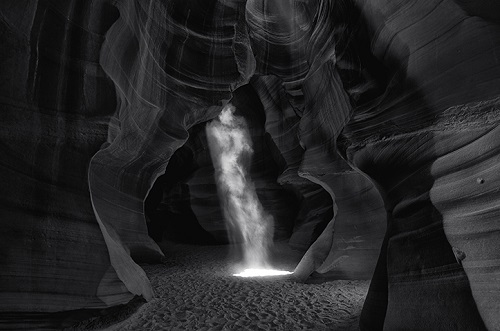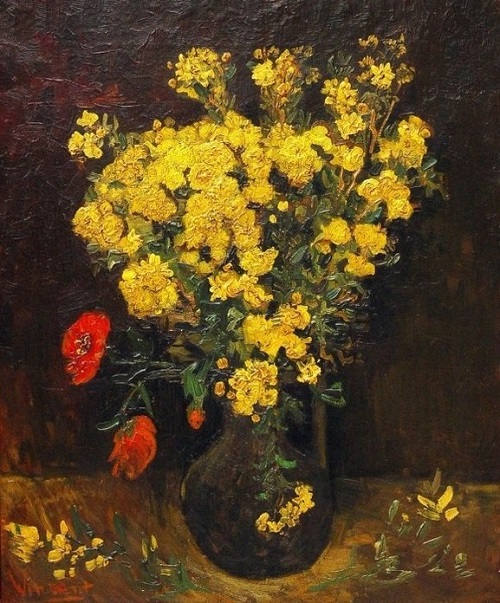World of Art movement for theater
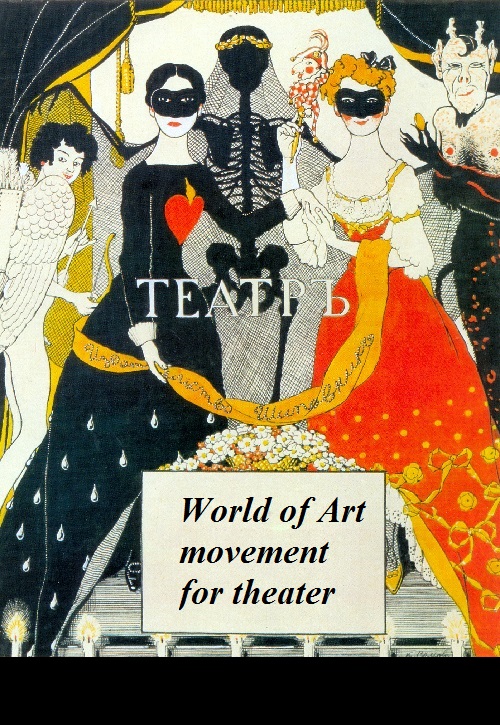
Konstantin Somov. Title Page for A. Blok’s book The Theater. 1907. Tretyakov Gallery, Moscow. World of Art movement for theater
World of Art movement for theater
In the history of Russian art, and in particular, the late nineteenth century was a period of creative innovation and a fundamental restructuring of form. Thus, in the 1890s, a generation of artists who radically revised almost the entire range of established tradition, opened a new chapter in Russia’s visual arts. The World of Art group, which gave rise to this forceful and influential movement, was formed in St. Petersburg in the early 1890s. In 19885, Savva Mamontov established his private opera company in Moscow, enlisting many prominent artists to work as theatrical designers. This laid the foundation for a new type of stage decor, having nothing in common with traditional stereotypes. All World of Art members were strongly attracted to the theater. Much later, in his memoirs, Benois admitted that throughout his life he worshiped the theater, that in his mind the concept of “artistry” was always associated with the concept of “theatricality”. The same is true of other World of Art masters who dedicated themselves to stage design and book illustration.
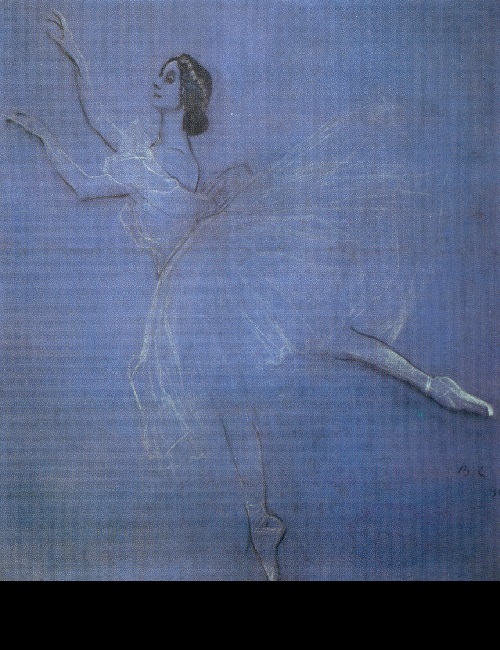
Valentin Serov. Anna Pavlova in Les Sylphides. 1909. Tempera on printed canvas. Russian Museum, St. Petersburg. World of Art movement for theater
World of Art movement for theater
The World of Art group played a preeminent role in the twentieth century stage design, whose significance transcends national boundaries. Indeed, it is of stature. Implied is not only the extensive acknowledgment throughout Europe of Russian stage designers, but also their direct impact upon scene-painting the world over. However, it should be emphasized that the World of Art movement artists did not initiate those changes that were to be observed in stage design in the first quarter of the twentieth century. They merely continued the innovations introduced much earlier by the Abramtsevo Colony and the Mamontovo Private opera founded in 1885.
By that year Russian stage design, which had once flourished, had become degraded to the point where it had largely lost its links with everything progressive in contemporary national art. No longer did notable artists, but “professionals”, mostly of journeyman caliber, rule the roost, plunging this field into a stereotype hardly witnessed in any other domain of the visual arts. As a result, the stage designer’s role was reduced merely to the creation of a cliche-ridden backdrop, either conventional or narrative, and the same sets were often used for the most varied productions.
Mamontov’s private company did away with this practice. Eminent painters again turned to design decoration. At first these were the Wanderers, Victor Vasnetsov and Vasily Polenov, later – the juniors, Mikhail Vrubel and Konstantin Korovin. Enhancing the role of stage designer, they maintained a firm conviction in the essential role of the sets and costumes in the entire theatrical production. Further, by ousting the “narrativeness” of standard settings, Vrubel, Konstantin Korovin and, later, Golovin, created an atmosphere of poeticized “theatrical reality”.
Some World of Arts members had already undertaken stage design after such memorable productions as Rimsky-Korsakov’s opera The Tale of Tsar Saltan (1900, stage set by Vrubel) and The Maid of Pskov (1901, with decor by Golovin) and the ballet, The Little Humpbacked Horse (1901, with decor by Konstantin Korovin).
So, a new chapter in Russian stage design had began.
In 1902, Benois executed the decors for Mariinsky Theater production of Wagner’s Gotterdammerung. Between 1902 and 1904, Bakst did the sets and costumes for production at the Alexandrinsky Theater, also in St. Petersburg, of Euripides’ tragedy Hippolytus and Sophocles’ Œdipis at Colonus. The characteristic World of Art style of stage design – the decorative, flat style that, despite the highly intensive color scheme, was nonetheless more in the nature of a drawing than a painting.
Toward the close of 1907 a theatrical enterprise conceived by a circle of enthusiasts in the vein of The World of Art aesthetic was established in St. Petersburg. Called the Antique Theater, its base goal was to restore the forms and the methods of the ancient European theater, especially that of the Middle Ages and the fifteenth and sixteenth centuries, and consequently, to focus attention on the eleventh-century liturgical play, the miracle play and pastoral of the thirteenth century, the fifteenth-century morality play, and the street farces of the sixteenth century.
Most of the World of Art members worked for this theater: Dobuzhinsky and Benois, who had helped found it, acted as artistic and historical consultants. Benois designed the theater’s drop curtain. Dobuzhinsky executed the superb stage design for Adam de la Halle’s Jeu de Robin et Marion. Collaborating with them at the Antique Theater were also Lanceray, Bilibin, Roerich, the young graphic artist Chembers, and the architect Shchuko.
The same year of 1907 saw the beginning of the World of Art’s close association with the Moscow Art Theater, Konstantin Stanislavsky came specially to St. Petersburg to see for himself of what the members of this still progressive group were capable.
Between 1909 and 1915 Benois, Dobuzhinsky, and Kustodiev designed an extensive range of productions in the classical repertoire at the Moscow Art Theater. Benois did the sets and costumes for the comedies of Moliere and Goldoni, as well as for three “little tragedies” by Pushkin; Dobuzhinsky executed the decors for the plays of Turgenev, Griboyedov, and Blok, as well as for Nikolai Stavrogin (an adaptation of Dostoyevsky’s novel, The Demons), and Kustodiev, for Saltykov-Shchedrin’s drama, The Death of Pazukhin.
Despite the artists’ remarkable individuality, their stage designs all display one definite style, a style reflecting the basic aesthetic principles common to the entire World of Art group. Though Bakst was unlike Dobuzhinsky, and while Roerich would appear to have little in common with either Sudelkin or Golovin, they all shared a common understanding of their task, which could be defined, on the one hand, as the attainment of an organic artistic unity of all the components of the production, and on the other, as the creation of a strikingly magnificent spectacle, capable of transporting the viewer into the unreal, romanticized world of a theater totally at variance with the commonplace of everyday life.
World of Art movement for theater

Amusements for Virgins (St. Petersburg, Maly Drama Theater). Set design by Sergei Sudelkin. 1911. Oil on canvas. Museum of Russian Art, Kiev

Sergei Sudelkin. Set design for Benavente’s The SeamySide of Life (St. Petersburg, Russian Drama Theater). 1912. Tempera on cardboard. Picture Gallery of Armenia, Yerevan
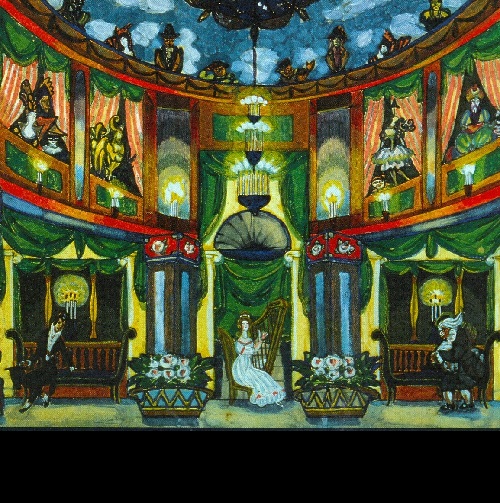
Sergei Sudelkin. At Olympia’s, set design for Offenbach’s The Tales of Hoffmann (Moscow, Zimin’s Opera House). 1915 Watercolor and gouache on paper. Bakhrushin Theater Museum, Moscow
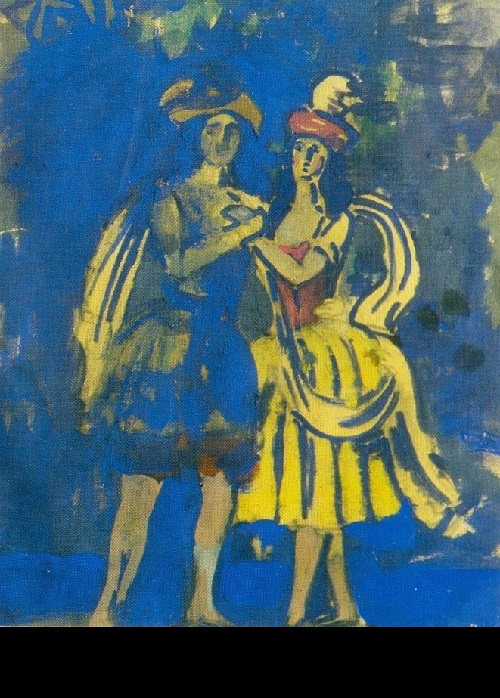
Two stage costume designs by Nikolai Sapunov. 1910. Gouache on cardboard. Brodsky Memorial Museum, St. Petersburg. World of Art movement for theater
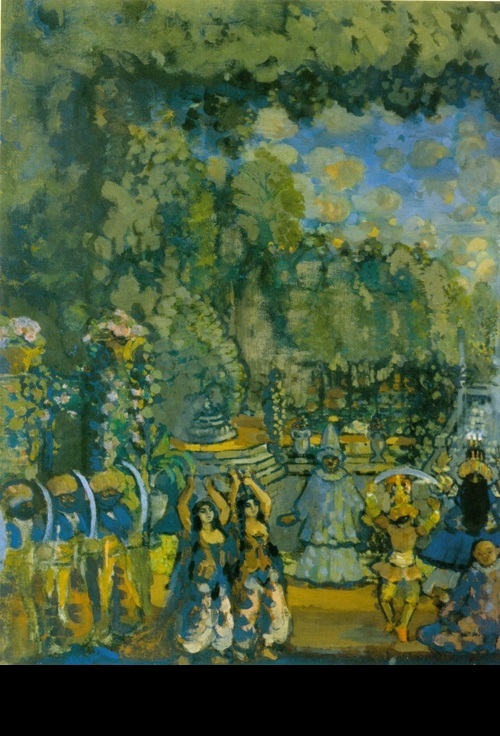
The Turkish Ceremony. Set design by Nikolai Sapunov for Act 4 of Moliere’s Bourgeois Gentilhomme (Moscow, Nezlobin Theater). Tretyakov Gallery, Moscow

Nikolai Sapunov. The Ball. Set design for Act 2 of Schnitzler’s The Scarf of Columbine (St. Petersburg, House of Interludes), 1910. Tempera on cardboard. Picture Gallery of Armenia, Yerevan. World of Art movement for theater

Stanislavsky’s Le Rossignol (Diaghilev Company). Costume design by Alexander Benois. 1914. Watercolor on paper. Russian museum, St. Petersburg
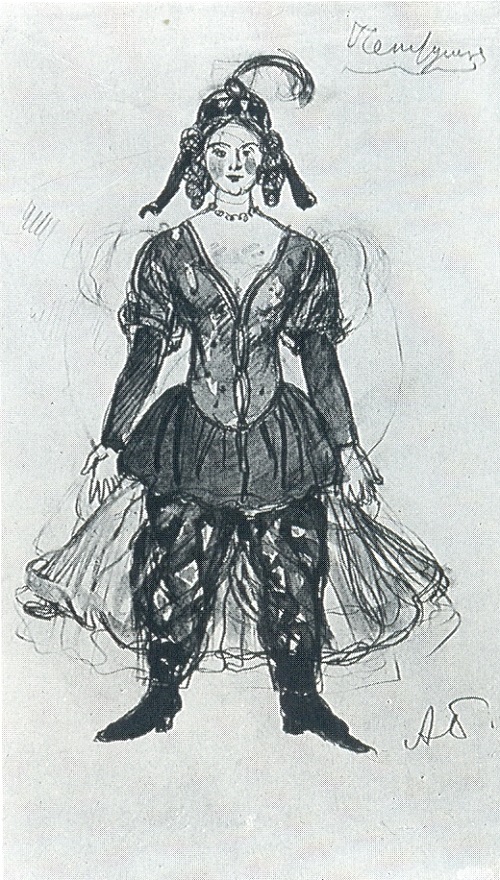
Dancing girl in Stravinsky’s Petrouchka (Diaghilev Company). Costume design by Alexander Benois. 1911. Watercolor and gouache on paper. Russian museum, St. Petersburg
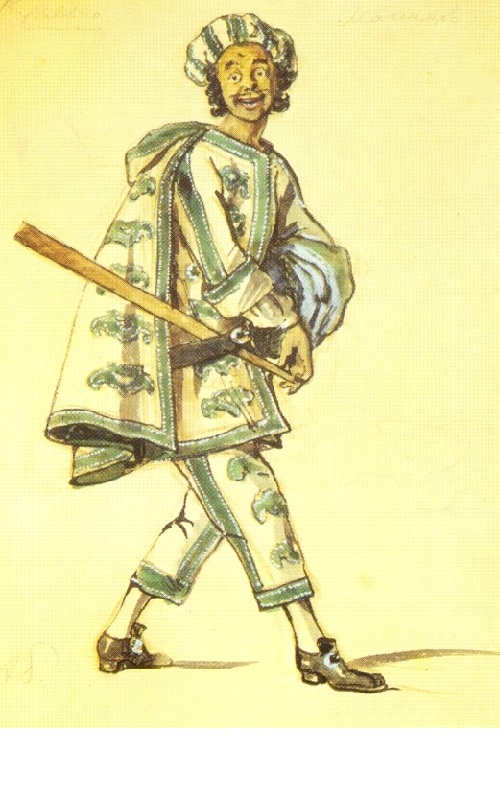
Truffaldino in Goldoni’s The Servant of Two Masters (Petrograd, Bolshoi Drama Theater). Costume design by Alexander Benois. 1920. Watercolor on paper. Dobychin collection. St. Petersburg
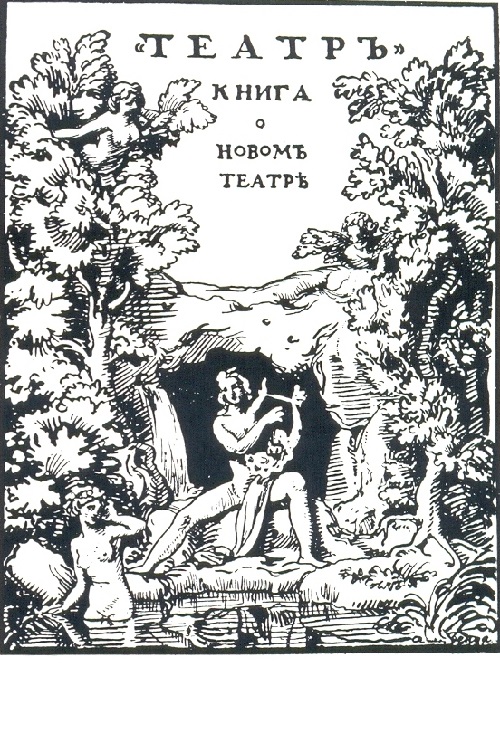
Frontispiece for the Theater by Alexander Benois. A Book About the New Theater. St. Petersburg, 1907. World of Art movement for theater

Italian comedy Billet Doux, Alexander Benois, 1905. Gouache, pen and ink, and pencil on paper mounted on cardboard. Tretyakov Gallery, Moscow
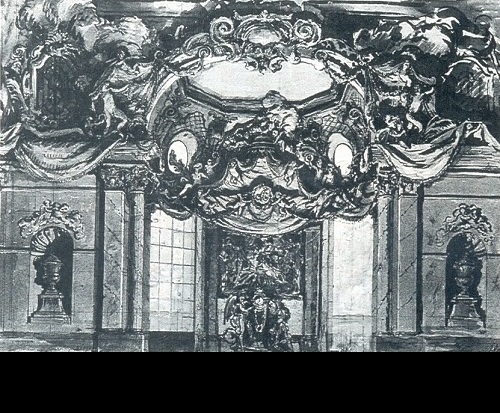
A. Benois. Set design for scene 2 of Tcherepnin’s Le Pavillon d’Armide (St. Petersburg, Mariinsky Theater). 1907. Watercolor on paper. Russian museum, St. Petersburg
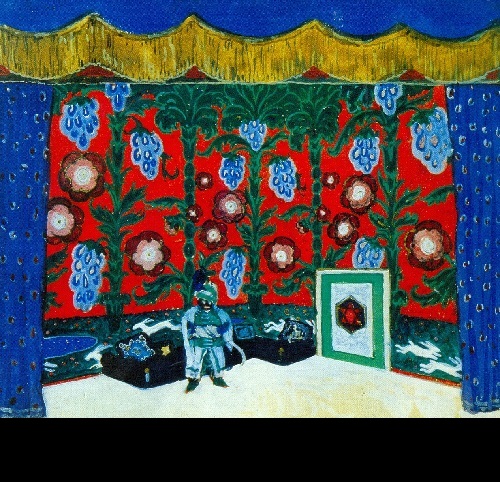
Benois. The Blackamoor’s Room. Set design for Stravinsky’s Petrouchka (Diaghilev Company). 1911. Watercolor and gouache on paper. Bolshoi Theater Museum, Moscow
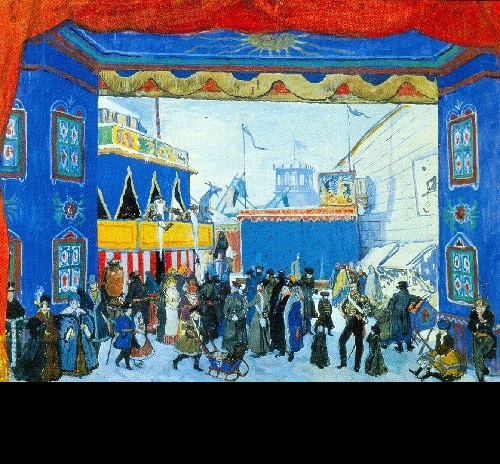
Alexander Benois. The Fair. Set design for Stravinsky’s Petrouchka (Diaghilev Company). 1911. Watercolor and gouache heightened with white on paper. Bolshoi Theater Museum, Moscow

Kashchei’s Kingdom. Set design by Alexander Golovin for Stravinsky’s The Firebird. 1910. Watercolor, gouache, and bronze paint on paper. Tretyakov Gallery, Moscow
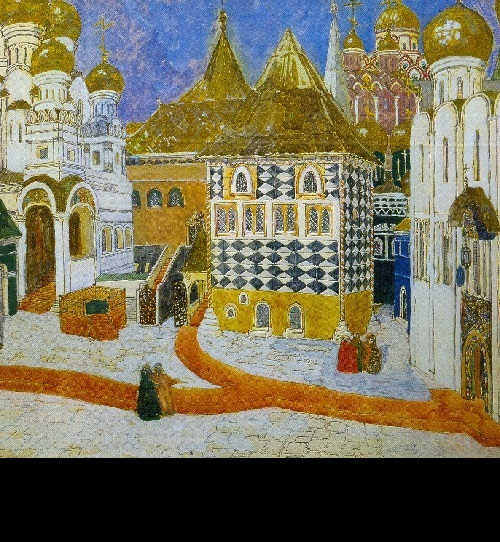
Kremlin Square. Set design by Alexander Golovin for Act I of Mussorgsky’s Boris Godunov (St. Petersburg, Mariinsky Theater). 1911. Watercolor and pen and ink on paper. Russian museum, St. Petersburg
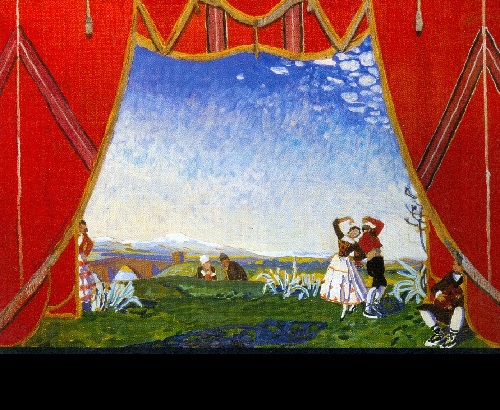
A. Golovin. Spanish dance. Set design for Glinka’s Jota of Aragon (St. Petersburg Mariinsky Theater). 1915. Tempera on cardboard. Russian museum, St. Petersburg

Alexander Golovin. The Volga Bank. Set design for Act I of Ostrovsky’s drama The Thunderstorm (Petrograd, Alexandrinsky Theater). 1916. Tempera on cardboard. Bakhrushin Theater Museum, Moscow
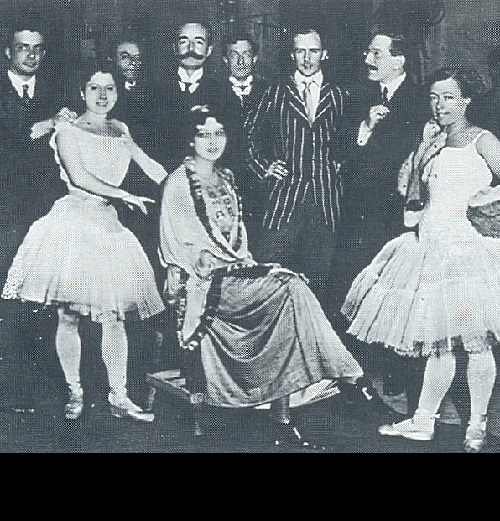
Ida Rubinstein (seated center), Michel Fokine, Leon Bakst, and Olga Preobrajenska (standing at right) with latin singers at La scala, Milan. 1910s. World of Art movement for theater
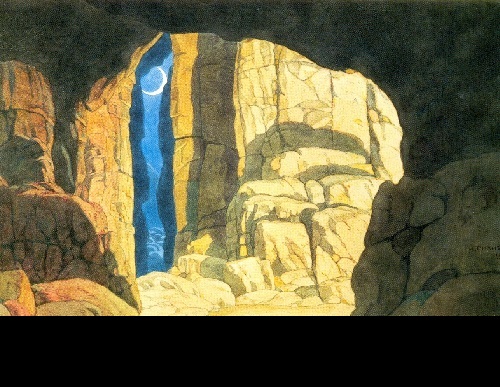
Chernomors Gardens. Set design by Ivan Bilibin for Scene 1 of Glinka’s Ruslan and Ludmila (St. Petersburg, People’s House Theater). 1913. Lead pencil on paper. Theater Museum. St. Petersburg

Dadon’s Palace. Set design by Ivan Bilibin for Act 1 of Rimsky-Korsakov’s The Golden Cockerel (Zimin’s Opera House). 1909. Pushkin Museum

Program cover for Musorgsky’s Boris Godunov, Ivan Bilibin. 1908. Watercolor on paper. Russian museum, St. Petersburg
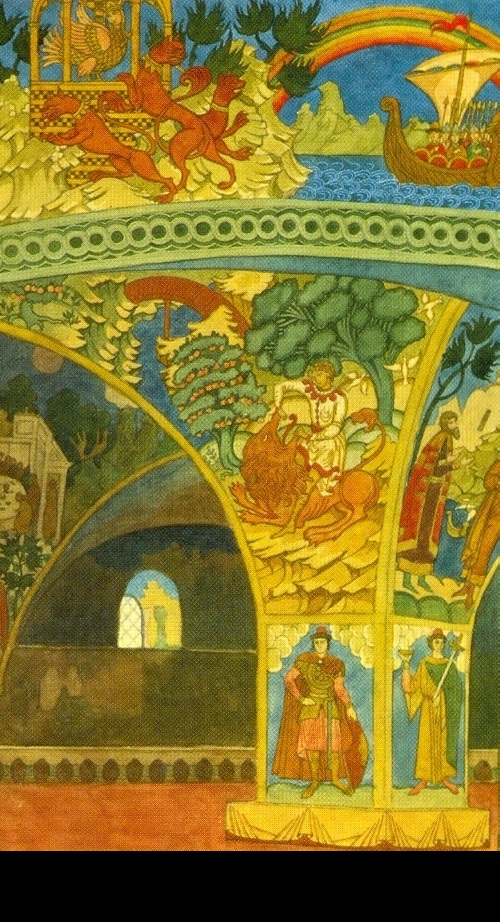
I. Bilibin. The Chambers of the Novgorod Fraternity. Set design for scene 1 of Rimsky-Korsakov’s Sadko (detail)

Ivan Bilibin. The Chambers of the Novgorod Fraternity. Set design for scene 1 of Rimsky-Korsakov’s Sadko (St. Petersburg People’s House Theater). 1913. Lead pencil on paper. Theater Museum. St. Petersburg
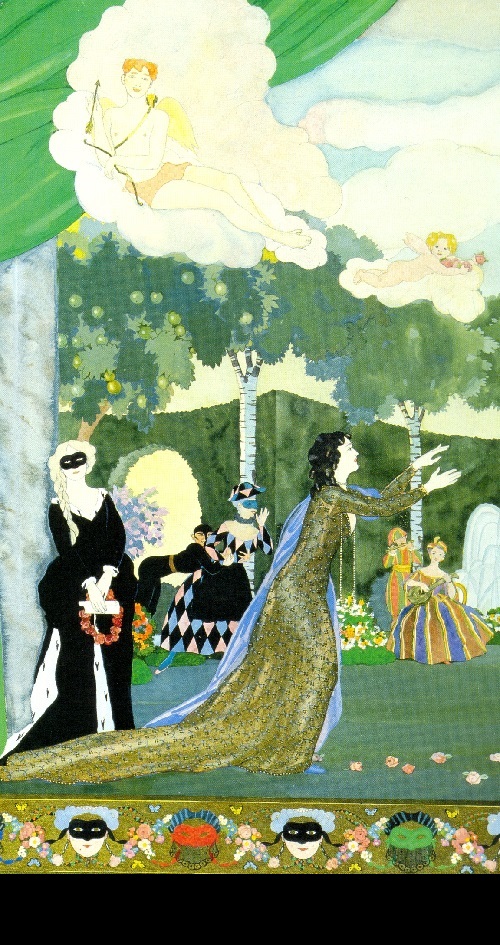
K. Somov. Curtain design for Moscow’s Free Theater. 1913. Watercolor on paper mounted on cardboard. Bakhrushin Theater Museum, Moscow
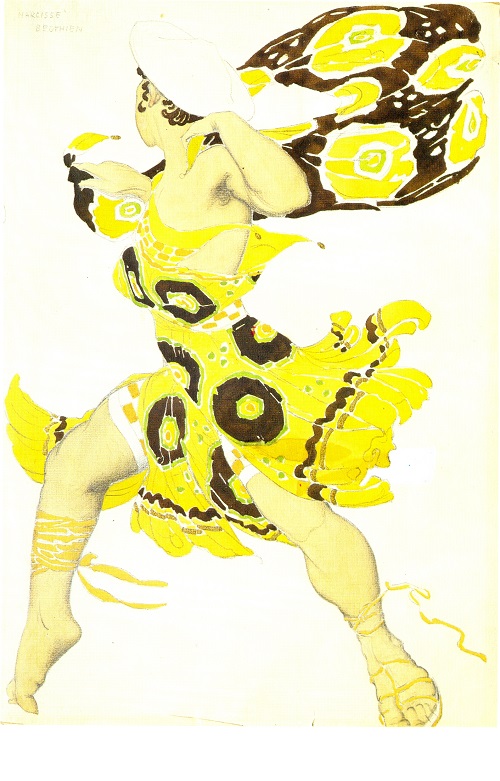
Bœotian in Tcherepnin’s ballet Narcisse (Diaghilev Company). Costume design by Leon Bakst. 1911. Watercolor and lead pencil on paper. Theater Museum, St. Petersburg. World of Art movement for theater
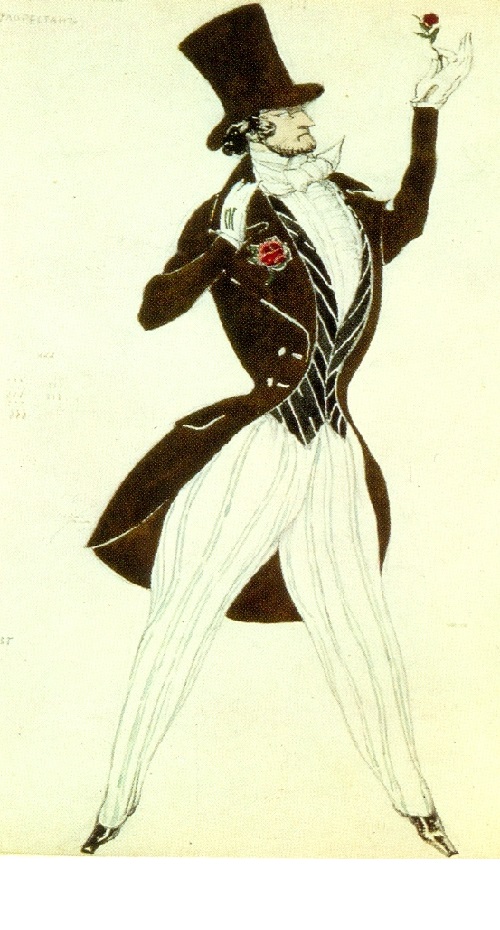
Florestan in Schumann’s Le Carnaval (Diaghilev Company). Design by Leon Bakst. 1910. Theater Museum, St. Petersburg
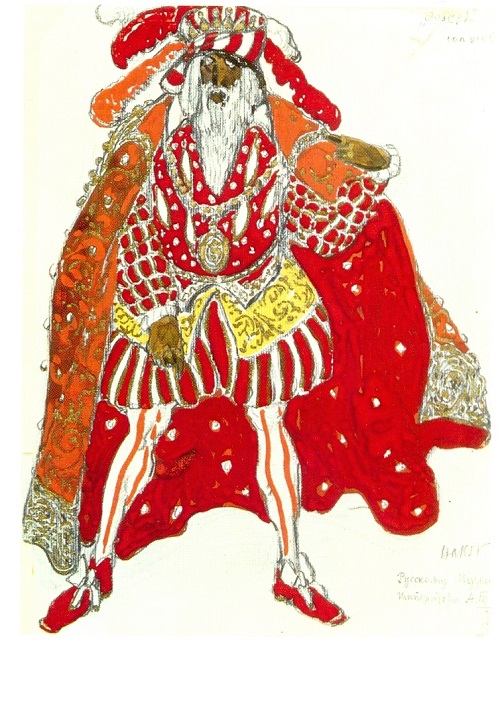
Richard Strauss’ Le Legende de Joseph (Diaghilev Company). Costume design by Leon Bakst. 1914. Watercolor, pencil and gold paint. Russian museum, St. Petersburg

L. Bakst. Costume design for Sophocles’ tragedy (Edipus at Colonus (St. Petersburg, Alexandrinsky Theater). 1904. Watercolor and pencil. Bakhrushin Theater Museum, Moscow
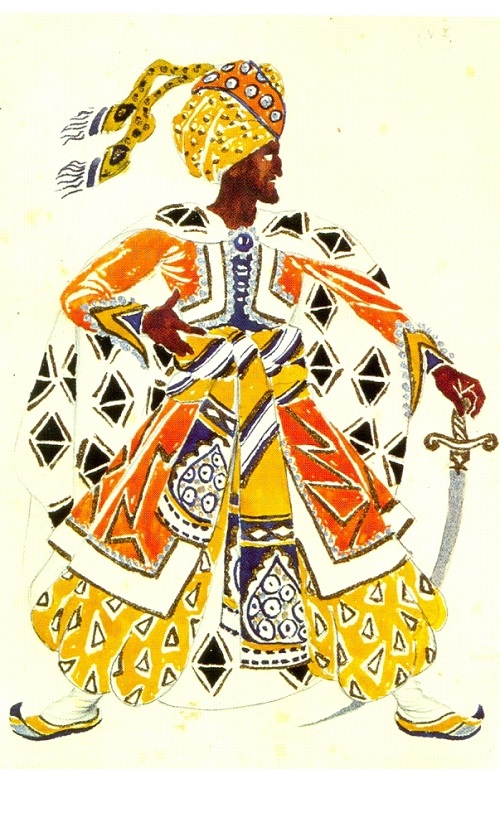
Costume design by Leon Bakst for the Blue God in Hahn’s Le Dieu Bleu (Diaghilev Company). 1912. Watercolor, gouache, and gold paint on paper. Bakhrushin Theater Museum, Moscow

Leon Bakst. Costume design for the Bœotian girls in Tcherepnin’s ballet Narcisse (Diaghilev Company). 1911. Watercolor and lead pencil on paper. Theater Museum, St. Petersburg
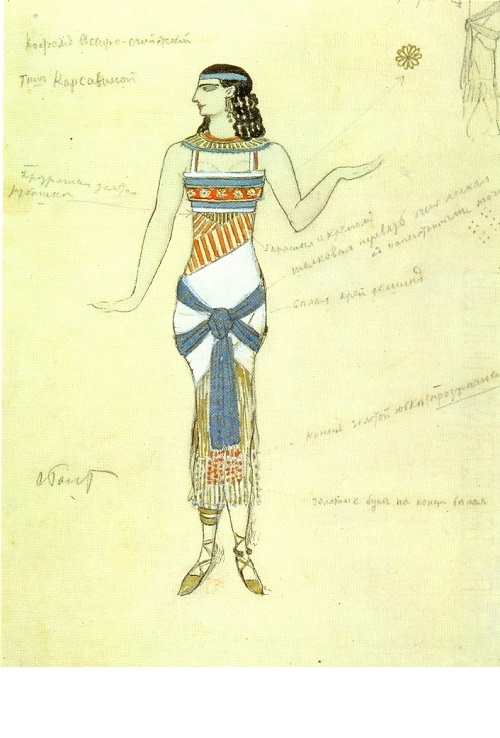
Design by Leon Bakst for the dancer Tamara Karsavina. 1907. Watercolor, Indian ink, pencil and gold paint on paper. Russian museum, St. Petersburg

Bakst. Costume design for the Tsarevna in Stravinsky’s ballet L’Oiseau de Feu.1910 (Diaghilev company). 1910. Theater Museum, St. Petersburg
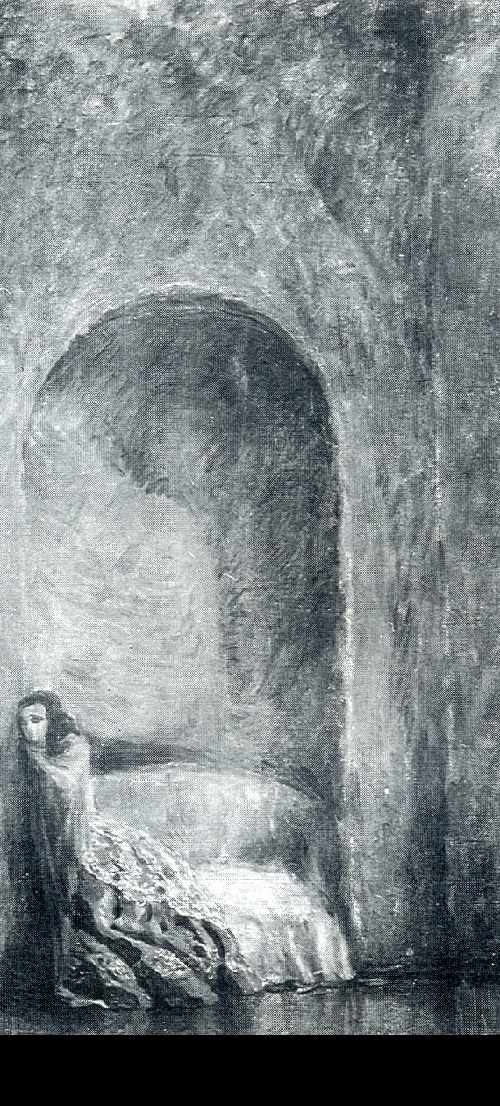
Birdhouses, after Nikolai Stavrogin, an adaptation of Dostoyevsky’s The Demons. (Moscow Art Theater), 1913. Oil on canvas. Mstislav Dobuzhinsky. Bakhrushin Theater Museum, Moscow
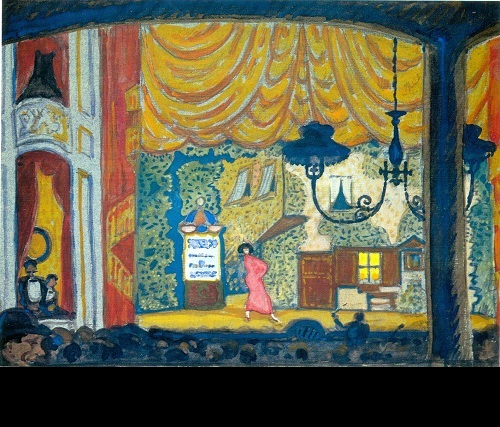
Denmark. A Small Theater. 1912. Gouache and lead pencil on gray paper mounted on cardboard. Mstislav Dobuzhinsky. Pushkin Museum of Fine Arts, Moscow
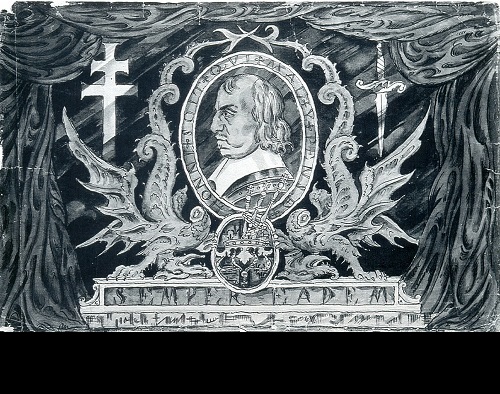
Curtain design for Lunacharsky’s drama Oliver Cromwell (Moscow, Maly Theater). 1920-21. Watercolor and pencil on paper. Mstislav Dobuzhinsky. Maly Theater Museum, Moscow

Set design for de la Halle’s pastorale Le jeu de Robin et Marion (St.Petersburg, Antique Theater). 1907. Mstislav Dobuzhinsky. Bakhrushin Theater
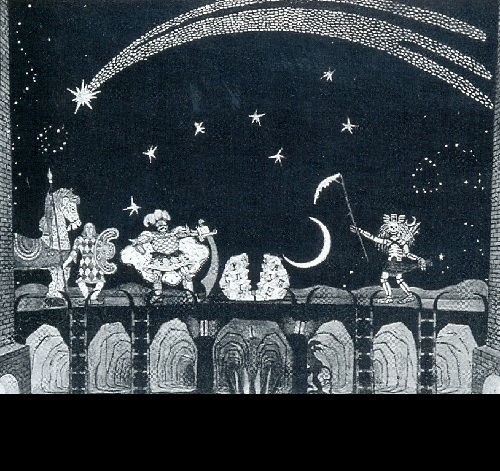
Prologue to Remizov’s mystery-play A Devilish Act on a Certain Husband and also Life’s Disputes with Death (St. Petersburg, Vera Komissarzhevskaya’s Theater). 1907. Set design by Mstislav Dobuzhinsky
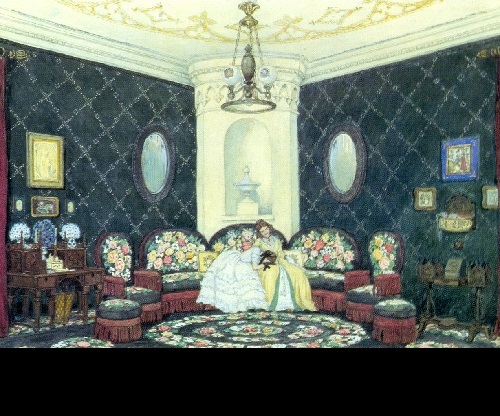
The Blue Lounge. Set design for act I of Turgenev’s A Month in the Country (Moscow Art Theater), 1909. Gouache, Watercolor, and pencil with silver powder on paper. Mstislav Dobuzhinsky. Tretyakov Gallery, Moscow
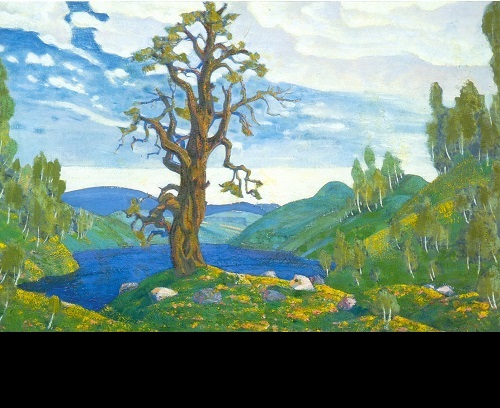
Nicholas Roerich. The Kiss to Earth. Set design for Stravinsky’s Le Sacre du Printemps (Diaghilev Company). 1912. Tempera on cardboard. Russian Museum, St. Petersburg

Tristan’s ship. Set design for Act 1 of Wagner’s Tristan and Izolda (Moscow, Zimin’s Opera House), 1912. Nicholas Roerich. Gouache on cardboard. Bakhrushin Theater Museum, Moscow
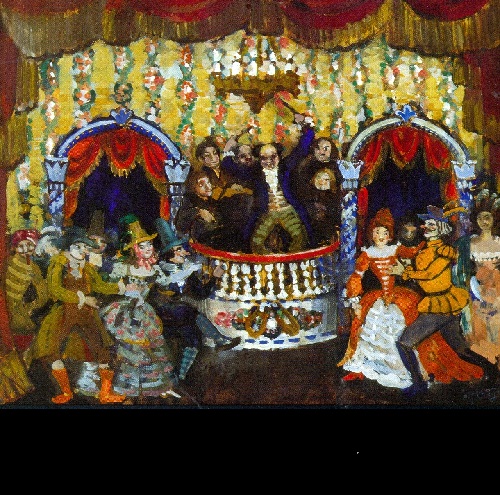
Nikolai Sapunov. The Ball. Set design for Act 2 of Schnitzler’s The Scarf of Columbine (St. Petersburg, House of Interludes), 1910. Tempera on cardboard. Picture Gallery of Armenia, Yerevan
All images scanned from «The World of Art movement» Объединение русских художников начала XX века Album. Aurora. Leningrad, 1991
